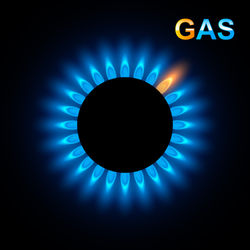- The smallest injection since early April
- The price reaction could mean new lows are on the horizon
- The August-September spread is telling us that shorts could push the price
We are currently in the heart of the off-season for natural gas demand. The shift from coal-fired power generation to natural gas is increasing the demand for the energy commodity during the hot summer months. At the same time, LNG is now flowing from US ports to consumers around the world via ocean vessels. However, the massive reserves of natural gas in the Marcellus and Utica shale regions of the US and technological advances in hydraulic fracking have combined to push output to record levels.
Over the recent weeks, Hurricane Barry approached the Louisiana Coast, home to the Henry Hub, the delivery point for NYMEX natural gas futures. The storm did not drive the price of the energy commodity above the critical level of technical resistance at just above the $2.50 per MMBtu level. In the aftermath of the storm, the price dropped. More recently, warmer than average temperatures descended on vast areas of the US, but the increased demand for cooling did not provide any support for the price of natural gas. The United States Natural Gas Fund, LP (UNG) is the most liquid ETF product when it comes to the energy commodity.
The smallest injection since early April
The last triple-digit injection into storage in the natural gas market across the US came on the week ending on June 14. The injections have been declining steadily over the weeks that followed. On July 26, the Energy Information Administration reported that stockpiles rose by only 36 billion cubic feet for the week ending on July 19. The latest injection was the lowest since April 5.
While the falling rate of injections should have supported the price of natural gas, the futures market declined late last week.

Source: CQG
As the daily chart shows, August futures fell to a low at $2.165 and closed last Friday at $2.169 per MMBtu. The price closed just 3.5 cents above the June 20 low at $2.134.
The price reaction could mean new lows are on the horizon
Hurricane Barry could not even push the price to a level that would have triggered buy stops in the natural gas futures. Rising temperatures and falling stocks did nothing to inject any support into the futures market. When the price of a commodity falls in the face of bullish fundamental events, it tends to be a bearish sign. While the natural gas market displays an oversold condition when it comes to short and medium-term technical indicators, it looks like new lows are on the horizon for the futures market as the active month rolls from August to September.
The August-September spread is telling us that shorts could push the price
As market participants are rolling risk positions from August to September, the spread between the two contracts has moved to a backwardation. The term refers to a market where deferred prices trade at a discount to nearby prices.

Source: NYMEX/RMB
As the front of the natural gas futures curve shows, the spread closed at a 1.9 cents discount for September futures. The spread tells us that those market participants rolling short positions are putting pressure on September as they repurchase August and sell the next active month. The backwardation is a sign that the bearish sentiment is rising.

Source: CQG
The chart shows that open interest has been growing as the price of natural gas has declined. Open interest is the total number of open long and short positions in a futures market. Typically, rising open interest validates a price trend. In the case of natural gas, the metric is another bearish factor.
The natural gas market declined in the face of bullish events, which means that it could be heading for a test of the $2 per MMBtu level.
The United States Natural Gas Fund L.P. (UNG) rose $0.08 (+0.43%) in premarket trading Tuesday. Year-to-date, UNG has declined -20.97%, versus a 12.85% rise in the benchmark S&P 500 index during the same period.
UNG currently has an ETF Daily News SMART Grade of C (Neutral), and is ranked #51 of 109 ETFs in the Commodity ETFs category.
This article is brought to you courtesy of ETFDailyNews.com.
About the Author: Andrew Hecht
 Andrew Hecht is a sought-after commodity and futures trader, an options expert and analyst. He is a top ranked author on Seeking Alpha in various categories. Andy spent nearly 35 years on Wall Street, including two decades on the trading desk of Phillip Brothers, which became Salomon Brothers and ultimately part of Citigroup. Over the past decades, he has researched, structured and executed some of the largest trades ever made, involving massive quantities of precious metals and bulk commodities. Aside from contributing to a variety of sites, Andy is the Editor-in-Chief at Option Hotline.
Andrew Hecht is a sought-after commodity and futures trader, an options expert and analyst. He is a top ranked author on Seeking Alpha in various categories. Andy spent nearly 35 years on Wall Street, including two decades on the trading desk of Phillip Brothers, which became Salomon Brothers and ultimately part of Citigroup. Over the past decades, he has researched, structured and executed some of the largest trades ever made, involving massive quantities of precious metals and bulk commodities. Aside from contributing to a variety of sites, Andy is the Editor-in-Chief at Option Hotline.

